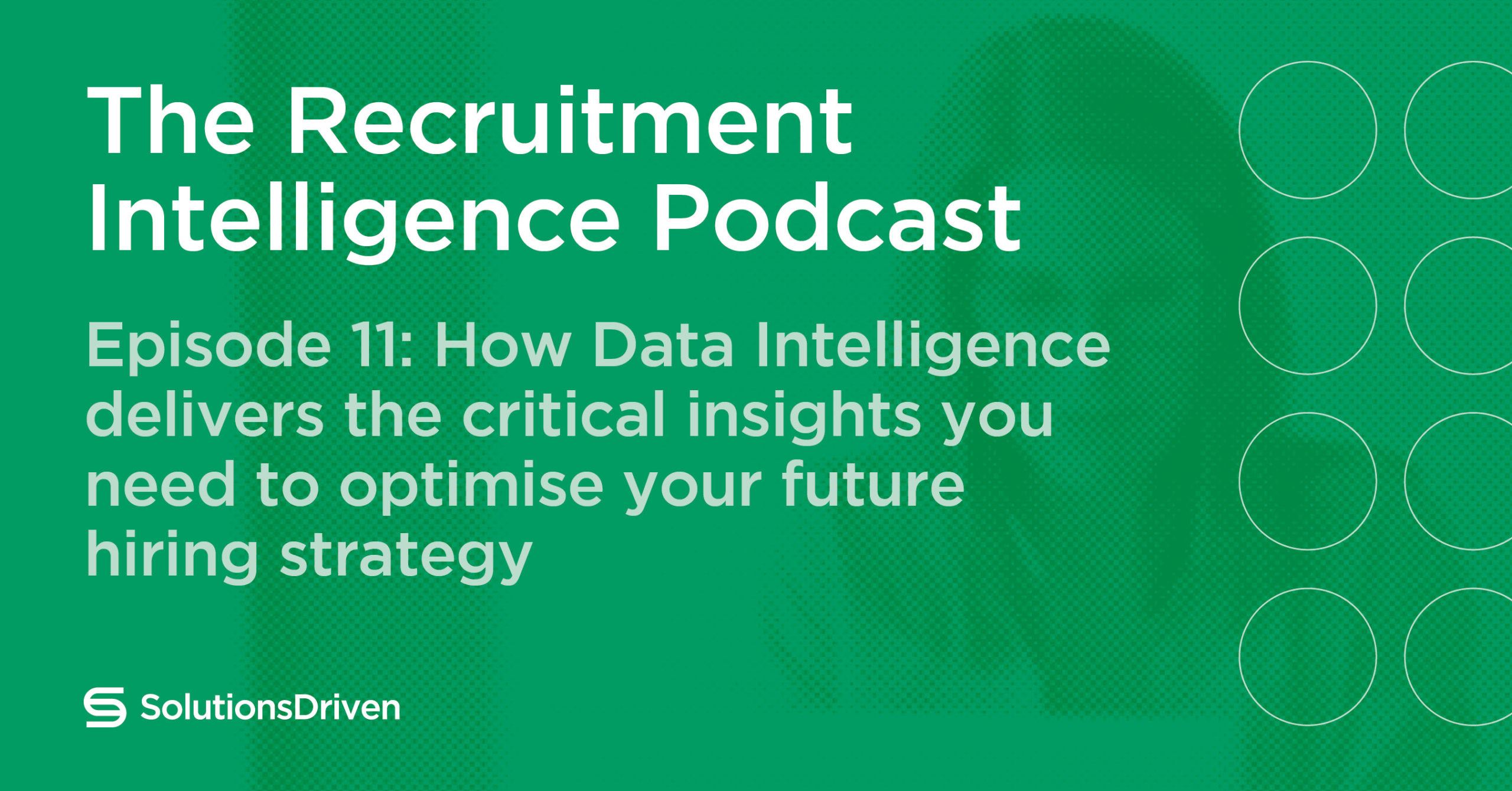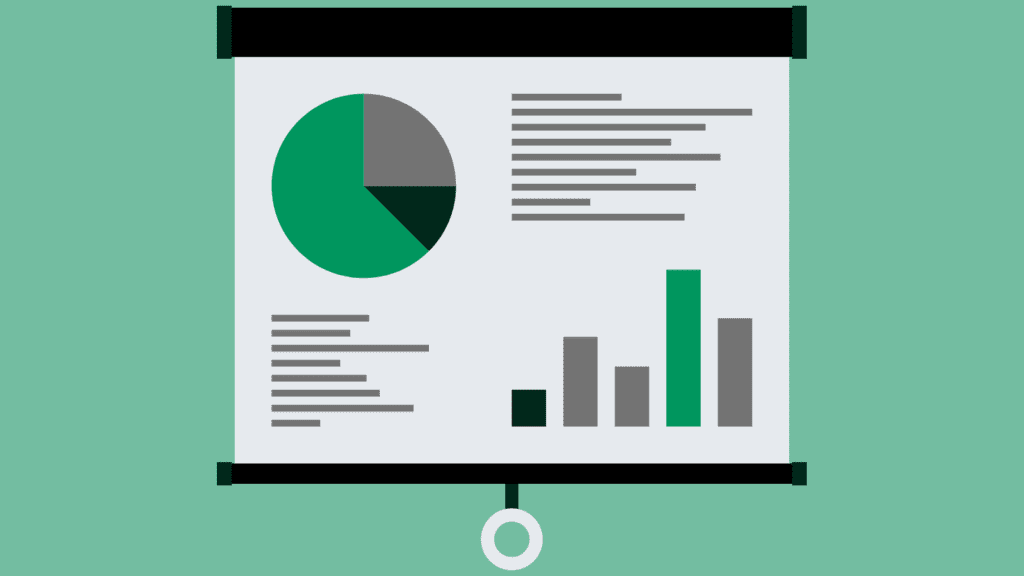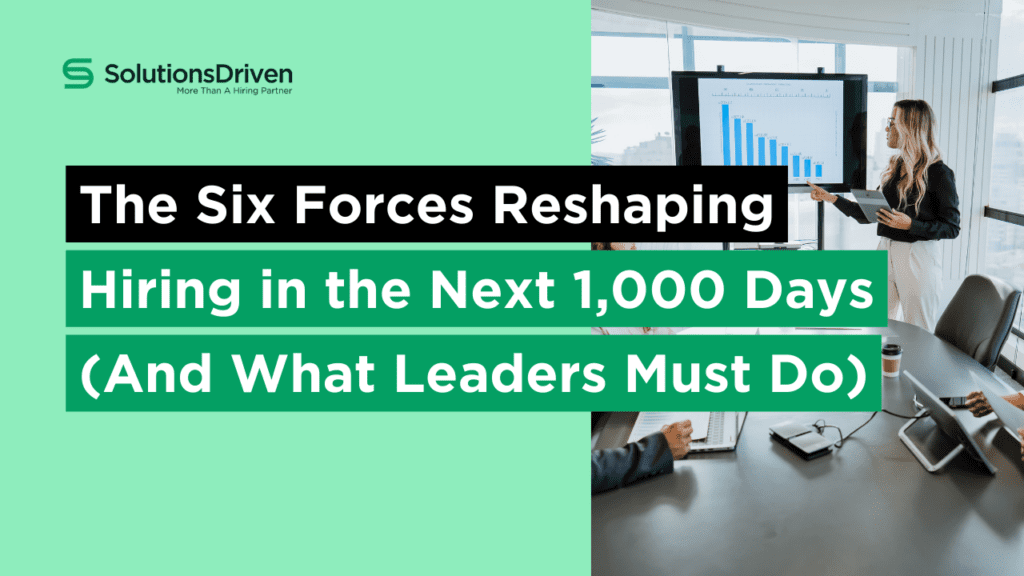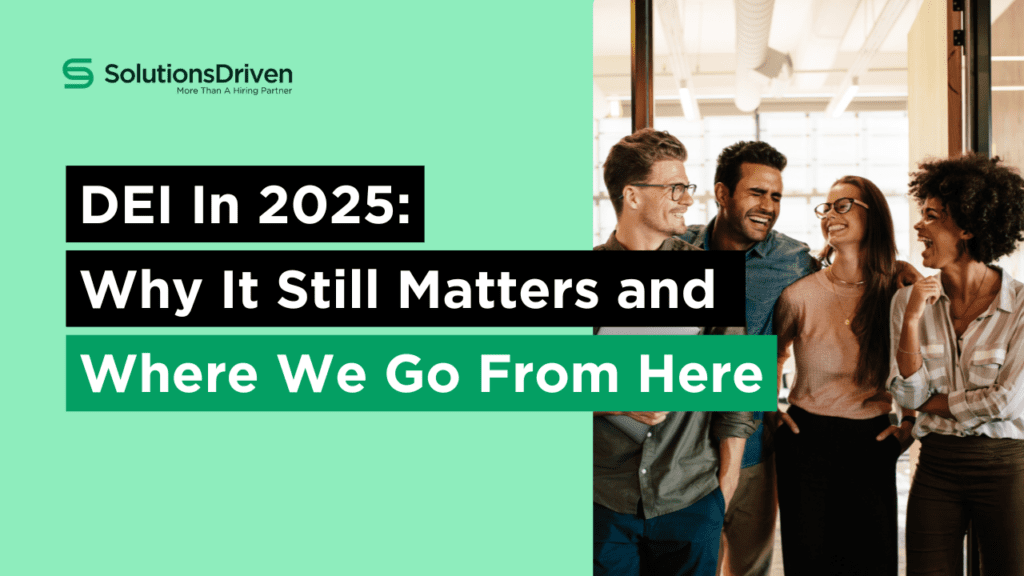To be the first to hear about our latest blogs, whitepaper releases, hiring enablement podcast episodes and get exclusive event invites, join our Exclusive Hiring Enablement Community.
Recruitment Process Intelligence is how we conduct every one of our hires at Solutions Driven, from meeting with our clients and hiring managers, to ensuring candidates are happy and successful in their positions, long term.
While the ‘Recruitment Process’ part is easy to understand, we wanted to dig a bit more into what we mean by the “Intelligence” part when we talk about Recruitment Process Intelligence (RPI).
So we sat down with Solutions Driven’s CEO, Gavin Spiers, to discuss how recruiters can use recruitment intelligence to get the right people in the right roles (every time), and how intelligence and insights can help businesses recruitment strategies longer term.

How Recruitment Intelligence Currently Works
Right now, recruitment and HR isn’t all that intelligence-driven. Sure, it’s tech-driven, and data is often used at the top level. However, when it comes to working from and providing real insights, that doesn’t happen enough. A 2019 Statista figure showed that only 28% of Talent Acquisition professionals mentioned that data is useful to improve outreach when recruiting.
Think about contingent recruiting. Rather than search down the perfect candidate, in the perfect market for a role, recruiters simply do a quick search and send over as many CVs as they think will fit.
Because real data research isn’t being done during each process, intelligence isn’t being gathered for future projects. And the business doesn’t get insights into things like the available talent pools in their industry.
Using Recruitment Process Intelligence
That’s why we use RPI throughout our process, to both help us fill our roles correctly and to help our clients gain insights that are valuable to their business.
According to Gavin, there are three main areas where intelligence is used:
Before the Recruitment Process Starts
At Solutions Driven, before we begin working on a role, we sit down with the stakeholders hiring for the position and have a scoping call. At this point we find out exactly what “success” looks like for each team.
In the long run, this will also help save time for the team.
As Gavin puts it, “it’s not good enough to give those insights at the end of the process.”
Diverse Talent Pools
So, for example, imagine we’re looking at a specific area’s talent pool. If that pool doesn’t match the client or hiring managers’ requirements, we can be upfront and say “Rather than looking for X years of experience, if you drop that slightly, the talent pool becomes more diverse.”
According to Gavin, “this gives our clients the insights and data they need to identify what they’re really looking for.”
Rather than our team just going along with what the client wants and perhaps failing to provide candidates within a reasonable time, we listen to what they want. Then we input our data and recruitment intelligence, and come away with a working brief that’s achievable and desirable for both the business and our team.
During the Process
While the hiring process is ongoing, there’s even more market data and knowledge to be shared with the business. Many of our clients work in unique spaces and every role in every industry is different.
So we’ll look at areas like benchmarking which is vital for helping to identify a hiring strategy. We report on what other organisations are paying for the same role and let our clients know. Perhaps they’re not offering enough and that could be tweaked to generate more interest. Or it could be they’re paying too much for that market and they should bring it down.

Employer Value Proposition
We’ll also gain access to what candidates are feeding back to us, in terms of what’s important to them. Perhaps they report it’s freedom in their role, perhaps it’s clear advancement opportunities. Perhaps these professionals want to gain new qualifications or use new technology and tools. This allows the business to tweak their job description or amend their EVP to attract candidates if those things aren’t in place.
After the Process
When the recruitment process ends, that’s when we have gathered the most intelligence. We can then analyse how the hire went, the job market, talent pools, and how the candidate experience was.
This hiring intelligence can be used to leverage a successful recruiting process in the future and attract better candidates.
One of the points Gavin made on the podcast was about brand engagement. How many candidates knew of the business brand? What was their feedback? This is useful for the hiring company as if very few knew of the company, they can use that to inform a brand awareness or engagement strategy.
“We’re building this data for two reasons. One to give insights to our customers about the particular role we’re working on, and two, to leave them with intelligence that allows them to think wider and say “ok that’s interesting, we’ve got an issue with our brand engagement.”

Post Hire Check-In
Also, at 3,6,9, and 12 month junctures post hire, we also check in with the candidate the business has chosen to make sure everything is running smoothly, and gather feedback on their success as employees. We also check back on how their candidate experience was. We can then bring all the recruitment intelligence we’ve gathered together to give real insights.
For example, a company could have hired 10 employees from their competitors. So hiring from competitors might be a great idea. But we then note that four of that team left within six months. The business can dig into whether there’s a culture disconnect, if there’s better benefits elsewhere, whether the role is different across the board etc. depending on the intelligence we gather.
Not Just Data
As you can see, intelligence in this case doesn’t just mean data on diversity or hiring trends. It means properly delving into leads in each talent market, mapping out the talent, collecting the data, and providing insights, based on our experience, to our clients.
In RPI, it means taking that intelligence and turning it into insights that can help us support better in future roles, and help the company focus more strategically about their roles.
The Blend Of Art And Science
By blending art (human-powered processes) with science (intelligence and insights), you get much more than a dashboard of numbers that doesn’t mean anything to the hiring manager. Businesses must embrace both the hard data and what can be gleaned from it to keep ahead of the competition and build their teams. This also helps them become better employers.





